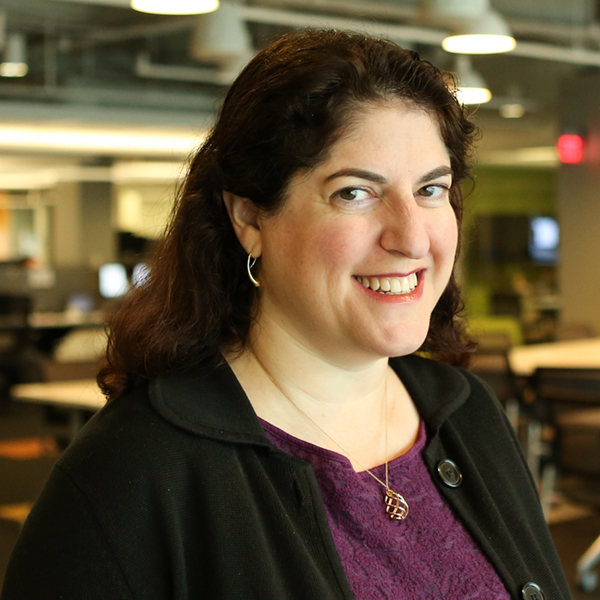(This op-ed originally appeared Oct. 1, 2012, on The Chronicle of Philanthropy website.)
Philanthropists face a new challenge as they seek to bring about social change in a time of great government austerity.
Whoever is elected in November to govern in Washington and in state houses and city halls across the United States will confront tremendous fiscal constraints. Given the long-term pressure bearing down on government budgets, it won’t get better any time soon. As a result, many foundations and donors must change how they think about their grant making.
Consider grant makers who support advocacy, long seen as a way for philanthropy to get more bang for its buck.
Gara LaMarche, former president of the Atlantic Philanthropies, says “funding advocacy and advocates is the most direct route to supporting enduring social change for the poor, the disenfranchised, and the most vulnerable among us.”
But in an era of fiscal constraint, that might not be the case. A successful advocacy campaign might mean government agrees to pay for one program at the expense of another, making this approach effectively a zero-sum game in a climate hostile to tax increases.
Many donors deliberately back off from any project involving government because they believe philanthropy should work independently of government or they abhor the partisanship and red tape it entails. They give instead to, say, nonprofits serving the homeless or to their alma maters. However, even those donors can’t escape the ramifications of austerity. The homeless shelter they may donate to probably depends on government support and may be getting a lot less of it. And the finances of public higher education in this country are taking a beating.
That means a lot of donors will need to figure out new ways to interact with government if they want to make a difference.
To calculate how many donors are already making grants that have a government connection, we analyzed a random sample of 400 gifts of $1-million or more over the past decade from a database maintained by the Center on Philanthropy at Indiana University.
We discovered that 40 percent of the donations were connected in some way with government. The biggest chunk (17 percent) went to public universities, which is not surprising given the deep connections so many philanthropists have to such institutions.
Setting aside those donations, 23 percent of the big gifts sought to shape what government does, improve its ability to function, or increase the effectiveness of the nonprofits that are paid by government agencies to carry out important public services.
The large share of gifts with government connections makes sense. Philanthropists use their money to fill unmet needs in our society. So does government. As one foundation officer observed, “The bulk of the work that everybody is trying to do still lies in the hands of the government.”
So at this time of fiscal challenge, donors should consider two of the most effective ways to use private money to help government serve the common good.
Invest in government’s capacity to govern. Despite its vast resources, government is woefully constrained when attempting to invest in its own ability to get things done. While business leaders have long realized the importance of investing in leadership development, innovation, and other efforts that make their companies stronger, government is largely unable to do this on its own. One way philanthropy can help is to strengthen the ability of government agencies to do their jobs.
A powerful example is the Broad Foundation’s programs for supporting leaders in America’s urban school districts.
The foundation’s primary donor, Eli Broad, explained the approach in his book, The Art of Being Unreasonable:
“In determining how best to leverage our investment in improving America’s public schools, we relied on the essential ingredient in any successful organization: smart people. I realized that if we could help identify or train effective school-district leaders, they could give teachers the necessary resources and support.”
In 2011, Education Week reported that “21 of the nation’s 75 largest districts now have superintendents or other highly placed central-office executives who have undergone Broad training.”
The Broad Foundation reports that 75 percent of academy graduates who have served as superintendents for at least three years are outperforming comparison groups, based on a variety of student-achievement data.
Another example of philanthropy bolstering government’s capacity to govern comes from Michael Bloomberg, New York City’s mayor and one of the nation’s biggest donors.
Bloomberg Philanthropies’ nascent Mayors Project has committed $24-million to pay for “innovation delivery teams” in five U.S. cities; they help mayors take on ambitious projects to solve complex problems by connecting bureaucratic units that often work in isolation.
Help high-performing nonprofits do more with government money. America’s national safety net of social services is a curious public-private hybrid. Federal, state, and local governments underwrite the bulk of the cost of supporting vulnerable people in our society. But most services are delivered by nonprofits operating under government contracts or grants.
In essence, government hires nonprofits to do its human-services work. As government budgets tighten, they are squeezing nonprofits in turn, eroding their capacity to deliver results. Philanthropy can’t fill this gap, but it can pay for things that government won’t—and in the process strengthen the case for more effective government investment.
The history of the Nurse-Family Partnership offers a great example. The nonprofit’s approach, devised in 1977, has been rigorously tested and has achieved strong results when it sends nurses to visit the homes of first-time low-income mothers to help them prepare for and learn to care for their children, plan future pregnancies, stay in school, and find jobs.
Nurse-Family Partnership gets money from government to pay for its programs. But when the organization sought to expand its operations, government was not in a position to help the organization pay for a management structure that would insure high quality in every program. Several foundations joined together to pay for a much-needed data system and several other key components that would help the group expand successfully.
The organization’s growth proved so successful, it was then able to make the case for the federal government to provide $1.5-billion to pay for high-quality home-visitation programs like the one Nurse-Family Partnership offers.
Today, bolstered by this government money, Nurse Family Partnership is serving over 22,500 low-income families in 41 states.
These two approaches are strong examples of how donors can and should help government do more with less. Such approaches will be much needed, not just after the November elections settle who wins but as this country settles into a new era of government austerity.




